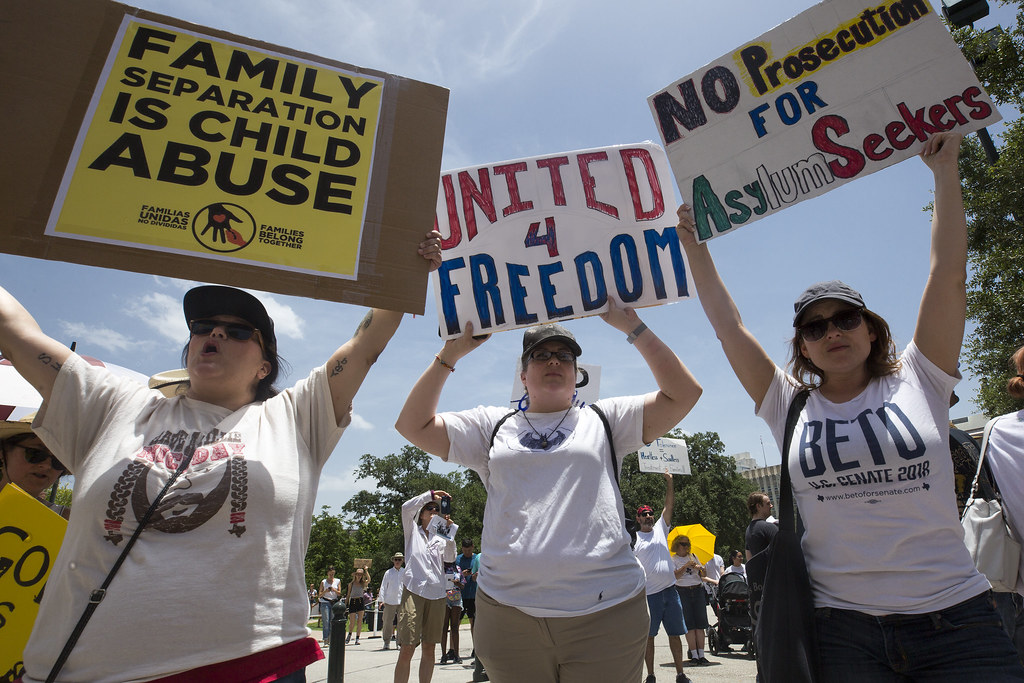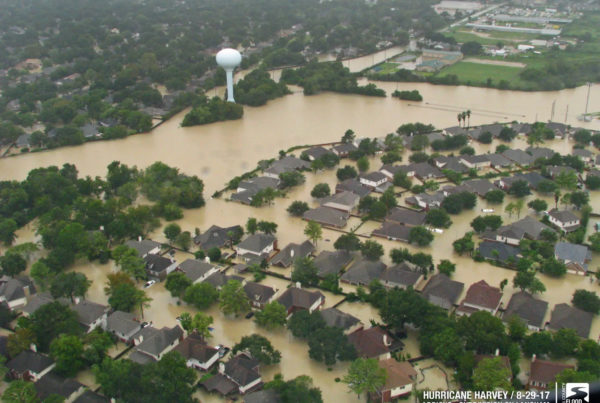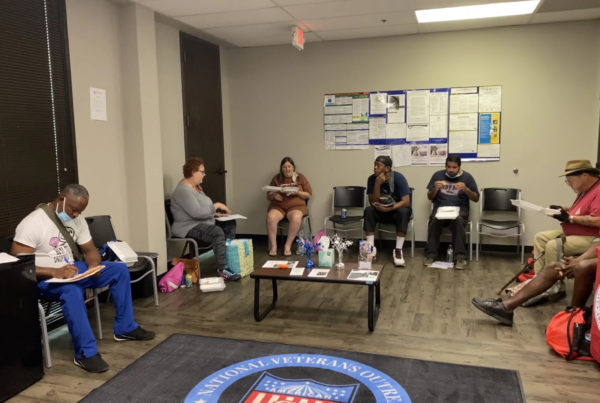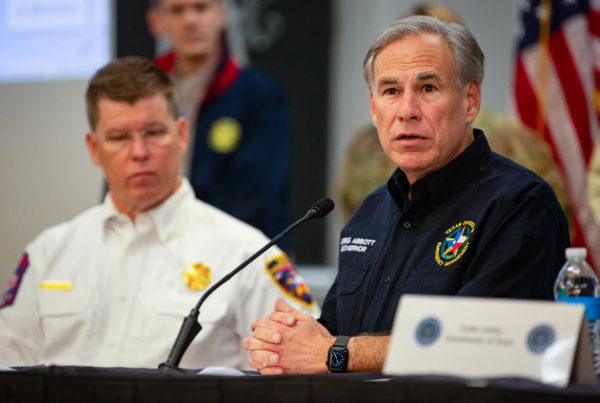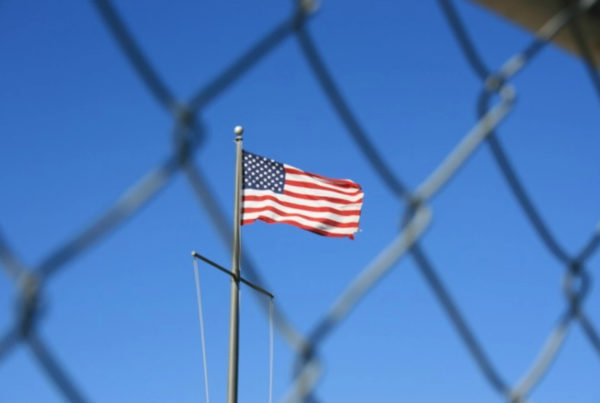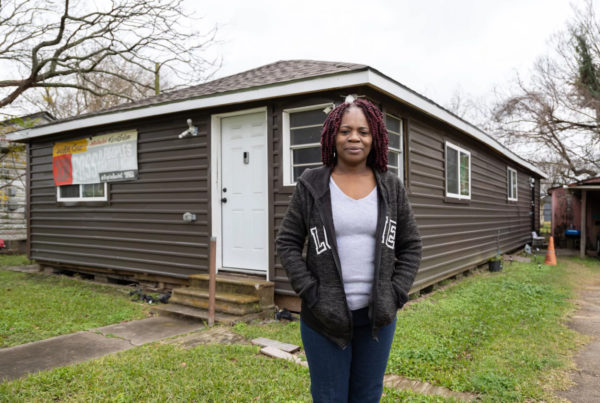Family separation was one of the most controversial immigration policies of the Trump presidency. As of January 2021, more than 5,000 children had been separated from their parents.
Immigration reporter Caitlin Dickerson spent the past year and a half researching how this policy came to be for The Atlantic. She joined Texas Standard to discuss her recently published investigation looking at the family separation policy’s origins, and how it played out.
This transcript has been edited lightly for clarity:
Texas Standard: Can you give us a sense of the mechanics of family separation, what it looks like in practice?
Caitlin Dickerson:. There are a couple of different versions of family separation that were debated under the Trump administration and then one that was ultimately pursued. So just at the outset, I’ll explain that border enforcement officials over time, because of growing concern about the rise of people trying to enter the United States both illegally and to seek asylum – which is legal – you know, they were looking for a solution. And a man named Tom Homan, who was the head of ICE under President Trump, came up with this idea to separate parents traveling with children, separate those families as they crossed the border as a way to deter migration.
And so it’s proposed at different points and through different mechanisms. Initially, there was an idea to administratively separate parents and children. So that just means putting them in different detention centers in different locations. You know, and the story sort of ends there. And then later, when that idea was rejected, there was instead a proposal to prosecute parents who crossed the border with their children illegally, even if they did so to seek asylum, because prosecuting the adult automatically required that they be separated from their child so that the adult could be taken to jail and then eventually be put in front of a judge. And that second proposal is the one that that the Trump administration ultimately moved forward with in the summer of 2018.
The first step toward putting this policy into practice was through a pilot program in El Paso. What did that look like, and how’d it go?
So after President Trump took office, there was a general message conveyed to local sectors of the Border Patrol that they should do whatever they can to crack down on the border in order to fulfill this new president’s promise to voters and his goal of really limiting border crossing as much as possible. And so based on that general assertion, Jeff Self, who ran the Border Patrol in El Paso, he took it upon himself to contact the local DOJ officials, the local U.S. attorneys in the region, and to let them know that his agents were going to begin referring parents traveling with children for prosecution, which isn’t something that the Border Patrol had done in the past for humanitarian reasons.
The local DOJ officials who received that notification were very skeptical, didn’t think it was a good idea and really said, you know, they would only go along with this if the effort focused on adults traveling with children who were also being accused of very serious crimes. The Border Patrol really didn’t heed those limitations DOJ tried to put in place. In fact, the guidance they sent out to agents, which I obtained, says that every single parent who crossed the border illegally with their child should be referred for prosecution and that those families should be separated.
Family separation officially starts in the Trump administration in 2018. Your reporting shows, though, that before that, it was clear to folks during the planning stages that this would be expensive, logistically challenging, hard to keep track of folks. As we know, though, thousands of families nonetheless ended up being affected by this policy. So, how did that happen? How was it pushed forward?
What my reporting showed is that people within the federal bureaucracy – whether they worked at DHS, whether they worked at DOJ, where the prosecutions took place, or HHS, where children were cared for – if they raised red flags about zero tolerance or family separation, they were left out of discussions moving forward so that ultimately, when the decision to move forward with zero tolerance is made, you have a very limited number of people in the room, none of whom are pushing back, none of whom are talking about the logistical challenges that are going to come with having parents and children detained by separate federal agencies that don’t have computer systems that talk to one another or that often place people hundreds or even thousands of miles apart from one another, just because of the way their detention systems are laid out.
And so you basically have a DHS secretary, Kirstjen Nielsen, who approves of this policy because at that point, she’s only hearing advice from people who are telling her that this is going to go smoothly, that there are going to be no serious issues associated with it, and in fact, that this had been done before, which wasn’t true. And based on that, she approves of zero tolerance in May of 2018.
What did your reporting show as far as outcomes for affected families themselves?
So there are hundreds of families that still have not been reunified, and in fact more than 150 children whose parents still, you know, years later, haven’t even been located by the federal government. But even families that have been reunified are still struggling very significantly. I found and I interviewed some of the families themselves, and I also interviewed therapists and other mental health professionals who have treated them.
Children are still recovering from severe developmental delays that occurred from just having their attachment to their parents disrupted so severely during these critical periods in their development. And so some children experience things like bedwetting, like loss of speech, nightmares and other PTSD-related symptoms, you know, just insularity, not wanting to leave home and being scared that their parent might be taken away from them again at any point. You know, years later, kids are still struggling with these emotions.
And, you know, a lot of therapists flagged for me that parents are, in many cases, so focused on trying to help their children get better and try to restore their relationships with their children, that they don’t have the time or the resources to work on their own mental health. And so both families and their mental health caretakers have made the point that this is going to be a lifelong process of moving forward from being separated from one another.
Near the end of the piece, you talk about how, upon entering office, the Biden administration created something called the Family Reunification Task Force. What exactly is that, and how is the work that it’s doing going?
The Biden administration has been unequivocal in that it opposes family separation in the forms that it took under President Trump. And so, right, President Biden signed an executive order soon after taking office establishing this task force, which has been charged with the job of continuing the work of reunifying the families that remain separated. And they’ve successfully reunited at least 400 families at this point. And now they’re left with very difficult cases, you know, trying to track down parents who’ve been, you know, many of whom were deported and haven’t been heard from for years by the federal government.
I’m trying to take them through the process of reunification, but it’s very difficult. I mean, when you have a family torn apart for that period of time, you know, you have cases where parents, they may be back in their home country. And, you know, for example, their sibling passed away. They’ve now become the caretaker for a niece or a nephew. And it’s not clear if that child is eligible to come to the United States with the parent to regain custody of their own child. You know, you have these messy situations that result from a family being separated from each other for this long. And so as time goes on, these cases are getting a lot harder.


